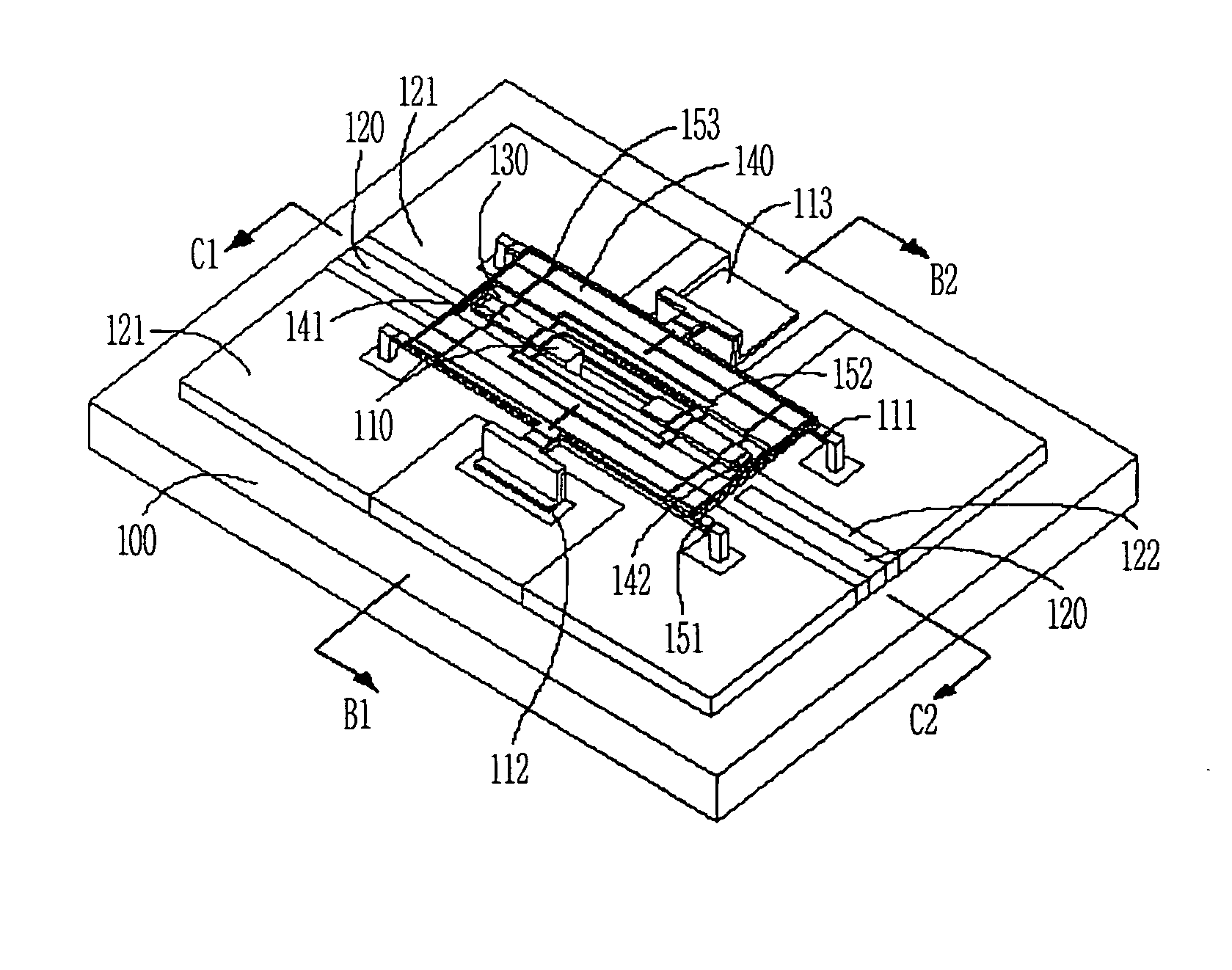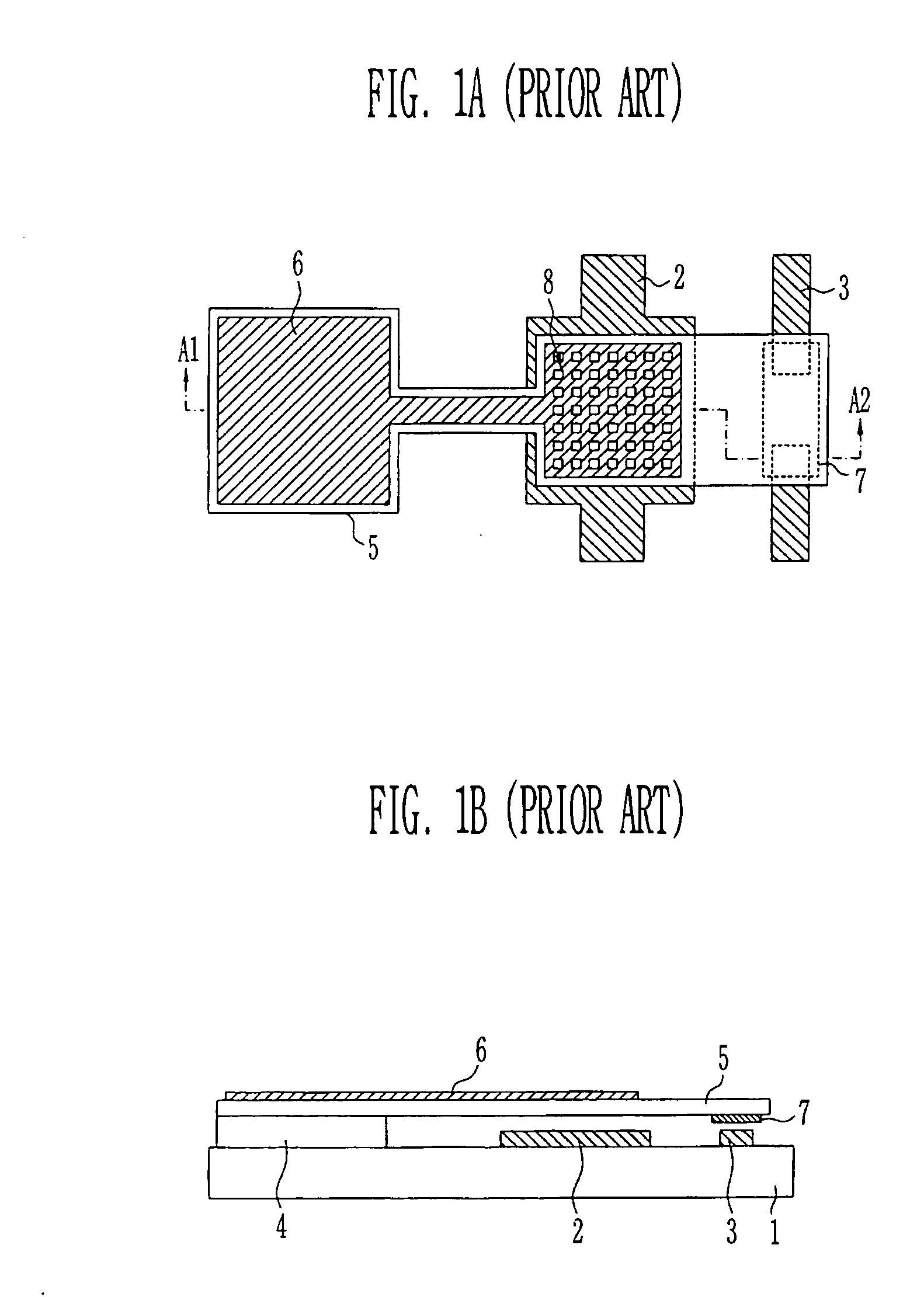Self-sustaining center-anchor microelectromechanical switch and method of manufacturing the same
a microelectromechanical switch and center-anchor technology, applied in the direction of electrical apparatus, electrostrictive/piezoelectric relays, waveguide devices, etc., can solve the problems of reducing the stability and reliability of the switch, reducing the reliability, and reducing the reliability, so as to improve the stability of the membrane stiction problem, the effect of less sensitive to thermal deformation and stable operation
- Summary
- Abstract
- Description
- Claims
- Application Information
AI Technical Summary
Benefits of technology
Problems solved by technology
Method used
Image
Examples
Embodiment Construction
[0033] The present invention will now be described more fully hereinafter with reference to the accompanying drawings.
[0034]FIG. 4 is a perspective view of a self-sustaining center-anchor microelectromechanical switch according to a preferred embodiment of the present invention, and FIGS. 5, 6A and 6B are a plan view and cross-sectional views taken along line B1-B2 and line C1-C2 of FIG. 4, respectively.
[0035] Referring to FIG. 4, an input portion of transmission line 120 and an output portion of transmission line 120 are formed on a semiconductor substrate or a dielectric substrate 100, at a predetermined gap, and an insulating material 122 is formed at both sides of the transmission lines 120 to fabricate parallel dielectric-moving plates 130, and ground lines 121 are formed at both sides of the insulating material 122.
[0036] The input portion and the output portion transmission line 120 are spaced apart with a constant distance with a self-sustaining center-anchor 110 therebet...
PUM
 Login to view more
Login to view more Abstract
Description
Claims
Application Information
 Login to view more
Login to view more - R&D Engineer
- R&D Manager
- IP Professional
- Industry Leading Data Capabilities
- Powerful AI technology
- Patent DNA Extraction
Browse by: Latest US Patents, China's latest patents, Technical Efficacy Thesaurus, Application Domain, Technology Topic.
© 2024 PatSnap. All rights reserved.Legal|Privacy policy|Modern Slavery Act Transparency Statement|Sitemap



